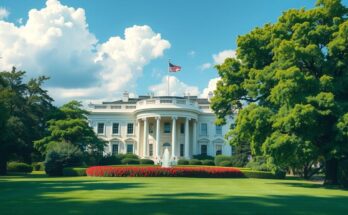Burundi’s population speaks Rundi, French, and Swahili, with a majority Christian demographic facing historical ethnic tensions. Agriculture dominates the economy with coffee as a key export. The country has high birth rates, a significant poverty level, and untapped mineral resources amid ongoing struggles for stability and growth.
Burundi’s official languages comprise Rundi (Kirundi) and French, with Swahili prevalent in Bujumbura as the primary trade language. Linguistic unity is evident as both Hutu and Tutsi populations converse in Rundi, a rarity in sub-Saharan Africa.
The predominantly Christian populace, largely Roman Catholic and Protestant, also includes practitioners of traditional religions. Tensions have existed between the state and the Church since the 1970s, with accusations that the Church favored the Hutu during the Second Republic.
Burundi’s challenging hilly terrain has led to dispersed family compounds, contributing to isolation and ethnic conflict between the Hutu and Tutsi. Despite a high population density, urban centers are limited, with Bujumbura being the largest. Civil unrest in the 1990s resulted in significant refugee movements within and outside the country.
Demographically, Burundi features high birth and growth rates, alongside a youthful population with over 40% under age 15. While life expectancy is low globally, it aligns with the African average.
Agriculture drives the Burundian economy, with coffee as the chief export. The population, heavily reliant on agriculture, confronts poverty levels exceeding 60%. Economic sanctions after the 1996 coup exacerbated challenges, although recovery initiatives have been initiated since the late 1990s.
Agricultural areas consist of staple crops such as beans, maize, and cassava. Coffee production fell in the 1990s due to strife, but has since recovered. Other crops include tea and sugar, with cotton cultivation declining significantly.
Mineral resources, including nickel and possible petroleum reserves, remain largely unexploited. Limited mineral production includes niobium and gold. Fuels derive mainly from peat and firewood, while hydroelectricity constitutes the primary source of energy.
Manufacturing remains modest, focusing mainly on processing agricultural products in Bujumbura, with key industries like textile and brewing. The government aims to bolster this sector despite past unrest conditions.
The Banque de la République du Burundi operates as the central bank, overseeing the national currency and bank regulations. An increasing trade deficit highlights the nation’s reliance on foreign aid and imports of food and goods, particularly coffee and tea, with China and India as primary trading partners.
Although tourism shows considerable potential, ongoing ethnic conflicts have suppressed visitor numbers.
Burundi, a landlocked nation in East Africa, has over 11 million citizens predominantly speaking Rundi, with French and Swahili also holding significance. The country has faced historical ethnic tensions between the Hutu and Tutsi, worsened by civil strife starting in the early 1990s. The predominance of agriculture defines its economy, featuring cash crops such as coffee and tea, yet poverty remains a pressing issue due to compounded factors like civil wars and unstable governance. Limited infrastructural development and mineral exploitation have hindered economic growth despite the existence of substantial natural resources.
In summary, Burundi is characterized by its unique linguistic landscape, predominantly Christian populace, and significant agricultural economy. Despite high population density, ongoing ethnic tensions and political instability have hindered economic recovery. Unexploited mineral resources offer potential, yet the country remains heavily reliant on agriculture and foreign aid. Continued efforts toward overcoming conflicts may unlock Burundi’s latent capabilities, especially in tourism and trade.
Original Source: www.britannica.com




